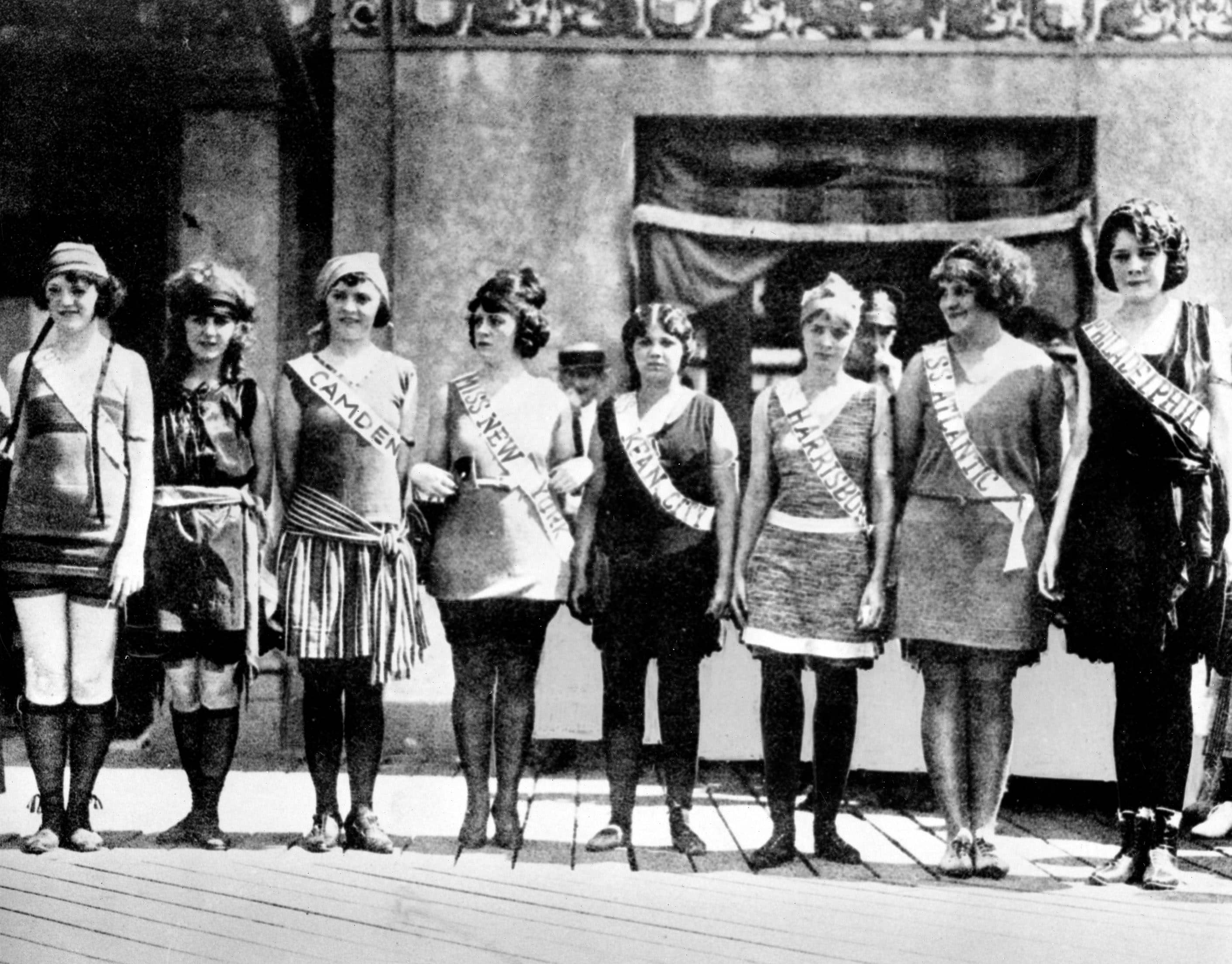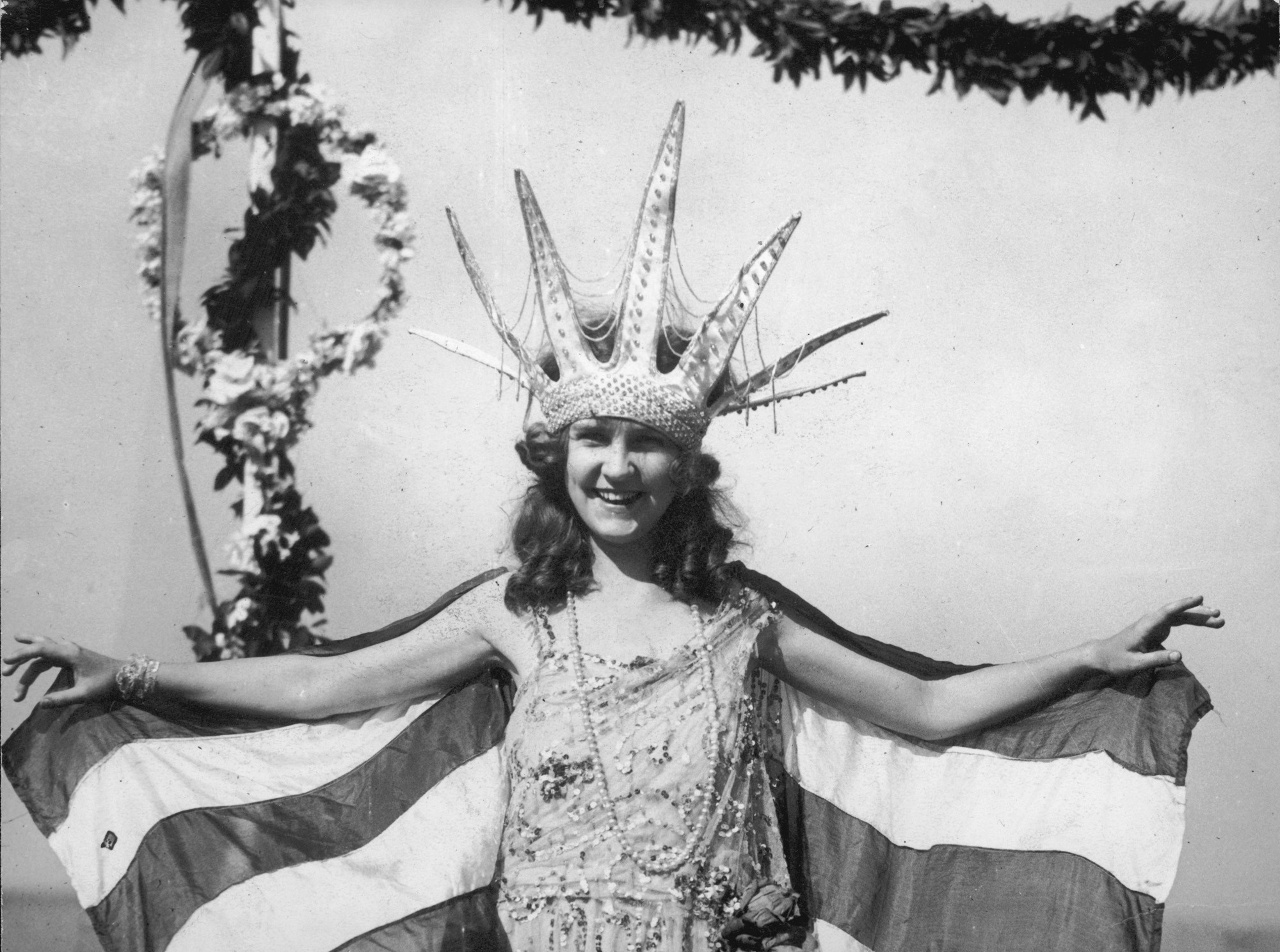Beauty pageant is a kind of contest. The competitors, usually women or girls, are judged for their physical appearance, personality, and poise (assured manner). Many beauty pageants also include talent and interview segments. The pageant’s winner, often called the queen, usually is awarded a crown, a sash with the honorary title on it, and other prizes. Hundreds of thousands of women and girls compete in beauty pageants annually. Such competitions are held around the world.
Types of pageants.
There are many types and levels of beauty pageants. These include pageants for adult, teenage, and child competitors. They take place at local, state, national, and international levels. This article primarily discusses beauty pageants in the United States.
The most popular adult beauty pageants in the United States include the Miss USA national pageant and the Miss Universe international pageant. The Miss America Competition, formerly the Miss America Pageant, is another popular national contest for young women. However, it no longer judges women on their physical appearance in a swimsuit. It focuses instead on their achievements, goals, passions, and talents. These three contests are broadcast live on television each year. Contestants usually begin by competing in preliminary or “feeder” competitions at the local level. Then, winners progress to state- and national-level contests. Winners of the national contests may compete at the international level. Contestants in major adult beauty pageants generally range in age from their late teens through their 20’s. Other countries also have their own national beauty pageants. Major international beauty pageants besides Miss Universe include Miss World, based in the United Kingdom; Miss International, based in Japan; and Miss Earth, based in the Philippines.
Teen beauty pageants also are quite popular. In the United States, the America’s Junior Miss pageant was established in 1958. Today, the competition is called Distinguished Young Women, and its contestants are judged in such categories as academics, fitness, self-expression, and talent. The Miss Teen USA national pageant is associated with the Miss USA and Miss Universe pageants. Miss America’s Outstanding Teen is a national scholarship competition for teenagers. It is associated with the Miss America Organization. Feeder contests for teen pageants occur at local and state levels.
Stand-alone or independent child beauty pageants also are common. Contestants in child pageants are judged in such categories as stage presence, facial beauty, personality, and costumes or outfits. They usually are under the age of 10.
Festival pageants are common at the local and state levels in the United States. Such pageants usually are associated with local and state fairs, seasonal special events, and agricultural events. Many festivals host pageants to choose a queen to reign over the event. In many of these pageants, girls and young women compete in several age groups ranging from infant to age 20. The winners usually are given such titles as Little Miss, Junior Miss, Teen Miss, and Miss. Festival-type pageants also are held in other countries.
Organization and elements.
Although some beauty pageant systems are nonprofit operations, most are for-profit enterprises. Pageants in general are a multimillion-dollar business. They may be organized by an individual or group. The organizer secures pageant sponsors, such as charities, large corporations, and smaller local businesses. The organizer also sets the rules for entry in the pageant. In well-known, high-level pageants, the contracts for participants often are extensive. They may include such requirements as never having been married or pregnant.
Most contestants pay an entry fee to participate in a beauty pageant. They may engage in fund-raising activities to raise the money to compete. On the day of the pageant, contestants arrive with a variety of costumes or outfits for different portions of the contest. These usually include an evening gown, interview outfit, swimsuit, and costume for performing a talent. A panel of judges chosen by the pageant organizers evaluates the contestants throughout the competition. They score the contestants’ appearance, confidence, and performance in various categories. The judges’ scores then are calculated to determine the winner. The winner—the queen—usually “reigns” for one year before passing on her title to the winner of the next year’s competition. During her reign, the titleholder may make appearances representing the pageant and its organizers.
History.
The American showman P. T. Barnum helped develop the first modern beauty contests in the United States in the 1850’s. But these events only judged women’s attractiveness based on a photograph. The first recognized in-person bathing beauty pageant in the United States was held in 1880 in Rehoboth Beach, Delaware.

The Miss America Pageant began in 1921 in Atlantic City, New Jersey, as a “bathing beauty” contest intended to prolong the summer tourist season. The winner was Margaret Gorman, who represented Washington, D.C. Miss America was broadcast on television for the first time in 1954. The Miss USA and Miss Universe pageants both began in 1952, after the reigning Miss America 1951 refused to model swimsuits for the pageant’s swimsuit-competition sponsor.

Our Little Miss, begun in 1962, is the oldest child-beauty-pageant system in the United States. The world of child beauty pageants attracted greater public attention after 1996. That year, six-year-old American beauty queen JonBenét Ramsey was murdered. A number of reality-television programs also made child pageants well-known in the 2000’s.
In Canada, the Miss Canada competition first was held in 1946. Australia’s first national beauty contest, the predecessor to Miss Australia, was a photo contest held in 1908. The oldest major international beauty pageant, Miss World, was created in the United Kingdom in 1951.
Criticisms and controversies.
The swimsuit competition that is part of many beauty pageants has been criticized for treating women’s bodies as objects. Some pageant organizers have eliminated the swimsuit competition from their pageants. For example, in 2014, the Miss World Organization cut the swimsuit portion from its future pageants. And in 2016, the Miss Universe Organization replaced the swimsuit competition in the Miss Teen USA pageant with an athletic-wear competition. In 2018, The Miss America Organization dropped the swimsuit portion of the Miss America Pageant and renamed that contest the Miss America Competition.
The weight of contestants also has been a controversial issue. Numerous studies have shown that based on the body mass index of many pageant contestants, they are dangerously underweight. Body mass index represents the proportion between a person’s weight and height. Some beauty queens have been criticized and made to feel ashamed for gaining weight after their victories.
Additionally, racial and ethnic integration in beauty pageants has been an issue. Until 1970, no African Americans competed in the Miss America Pageant. That contest’s first nonwhite winner, African American contestant Vanessa Williams, was crowned in 1983. Since then, other barriers have fallen. These have included the crowning of the first Asian American Miss America in 2000 and of the first Indian American Miss America in 2013. Many racial and ethnic groups host their own pageants, for example Miss Chinatown USA and Miss Black America.
